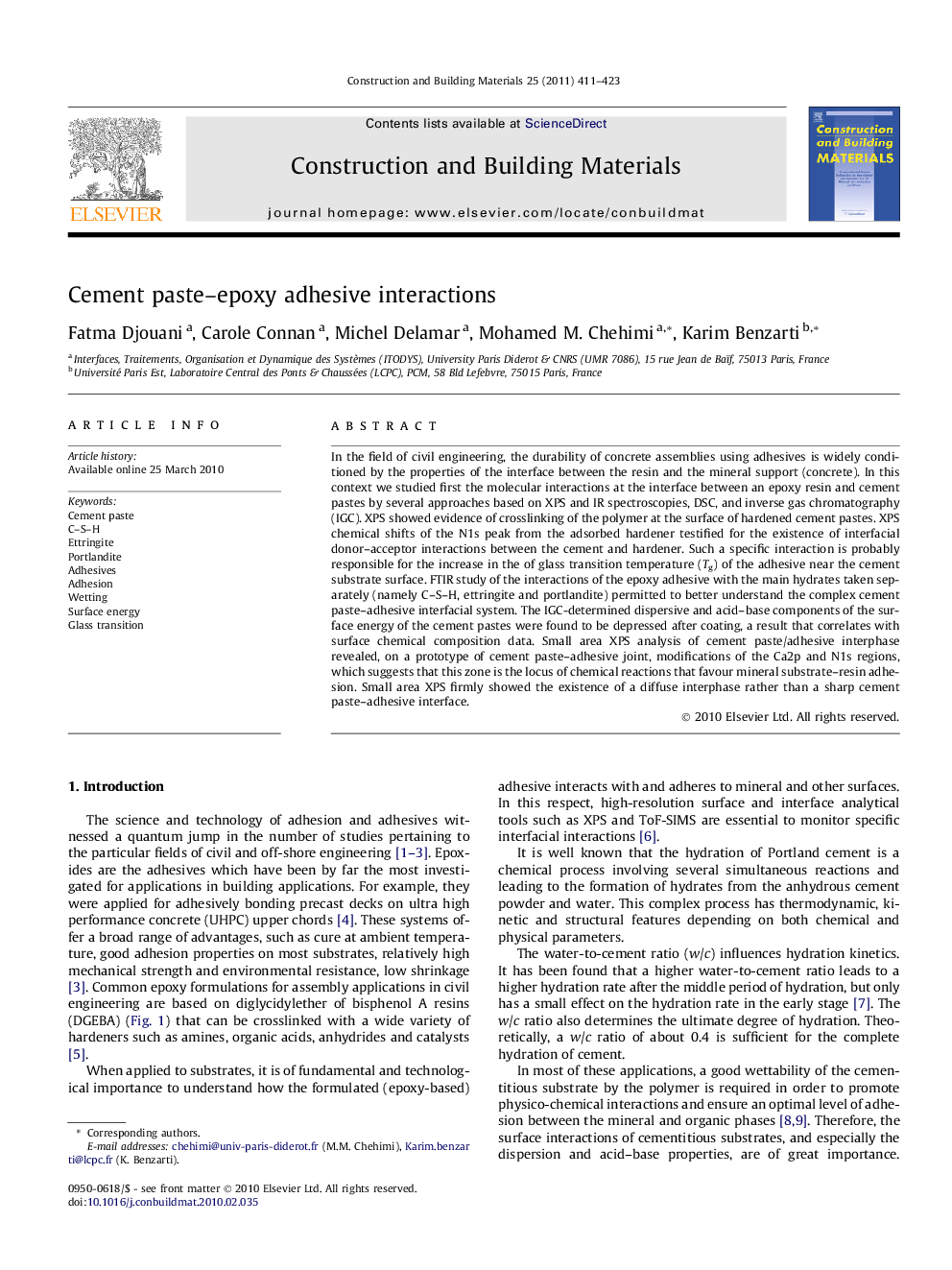| Article ID | Journal | Published Year | Pages | File Type |
|---|---|---|---|---|
| 259921 | Construction and Building Materials | 2011 | 13 Pages |
In the field of civil engineering, the durability of concrete assemblies using adhesives is widely conditioned by the properties of the interface between the resin and the mineral support (concrete). In this context we studied first the molecular interactions at the interface between an epoxy resin and cement pastes by several approaches based on XPS and IR spectroscopies, DSC, and inverse gas chromatography (IGC). XPS showed evidence of crosslinking of the polymer at the surface of hardened cement pastes. XPS chemical shifts of the N1s peak from the adsorbed hardener testified for the existence of interfacial donor–acceptor interactions between the cement and hardener. Such a specific interaction is probably responsible for the increase in the of glass transition temperature (Tg) of the adhesive near the cement substrate surface. FTIR study of the interactions of the epoxy adhesive with the main hydrates taken separately (namely C–S–H, ettringite and portlandite) permitted to better understand the complex cement paste–adhesive interfacial system. The IGC-determined dispersive and acid–base components of the surface energy of the cement pastes were found to be depressed after coating, a result that correlates with surface chemical composition data. Small area XPS analysis of cement paste/adhesive interphase revealed, on a prototype of cement paste–adhesive joint, modifications of the Ca2p and N1s regions, which suggests that this zone is the locus of chemical reactions that favour mineral substrate–resin adhesion. Small area XPS firmly showed the existence of a diffuse interphase rather than a sharp cement paste–adhesive interface.
